

In order to explore the deep reaches of space, astronauts will need powerful rockets and a lot of fuel.
Over the past week, Nasa has taken great strides toward this achievement, marking the completion of welding on hardware for the massive liquid oxygen tank for the Space Launch System (SLS).
Once built, the SLS will be the most powerful rocket in the world, and the agency has plans for it to launch the Orion spacecraft to deep-space missions.
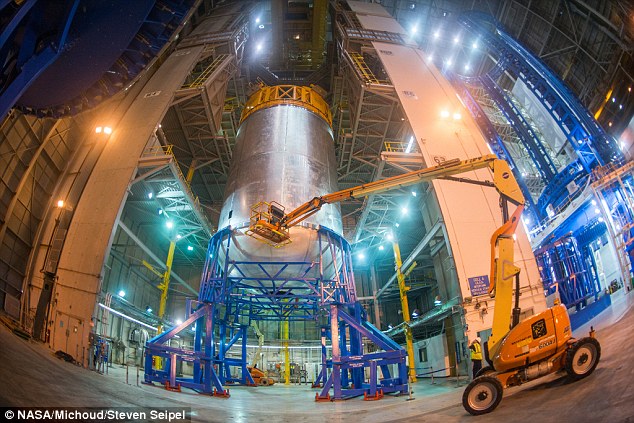
In order to explore the deep reaches of space, astronauts will need powerful rockets and a lot of fuel. Over the past week, Nasa has taken great strides toward this achievement, marking the completion of welding on hardware for the massive liquid oxygen tank (pictured above) for the Space Launch System (SLS)
As one of two tanks necessary to power the SLS, the liquid oxygen tank will be part of the core stage, which stands more than 200 feet tall with a diameter of 27.6 feet.
Liquid oxygen coupled with a separate tank of cryogenic liquid hydrogen will feed the powerful rocket’s Rs-25 engines.
As of last week, welding for the confidence hardware of the liquid oxygen tank has been completed.
Photos of the massive structure show just how big one of these tanks really is.
On the Vertical Assembly Center at Michoud Assembly Facility in New Orleans where the welding was competed, engineers standing nearby are dwarfed in comparison.

As one of two tanks necessary to power the SLS, the liquid oxygen tank (pictured left) will be part of the core stage, which stands more than 200 feet tall with a diameter of 27.6 feet. The SLS (model pictured right) will be the most powerful rocket in the world, and will launch the Orion spacecraft to deep-space.
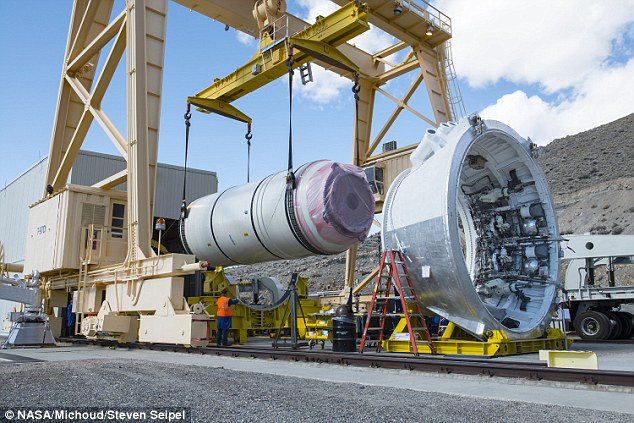
Liquid oxygen coupled with a separate tank of cryogenic liquid hydrogen will feed the powerful rocket’s Rs-25 engines. As of last week, welding for the confidence hardware of the liquid oxygen tank has been completed.
At the same facility, parts of the hardware for the liquid hydrogen tank were completed last month, and engineers say the welding for the Block I SLS configuration’s core stage will be done this coming summer.
Just days later, the agency also revealed it has completed a successful review of plans for the 'spaceport of the – the facilities and ground support systems for the SLS and Orion spacecraft at Nasa’s Kennedy Space Center in Florida.
To do this, experts spent months reviewing hundreds of documents.
‘Nasa is developing and modernizing the ground systems at Kennedy to safely integrate Orion with SLS, move the vehicle to the pad, and successfully launch it into space,’ said Bill Hill, deputy associate administrator of Nasa’s Exploration Systems Development Division at the agency’s Headquarters in Washington.
‘Modernizing the ground systems for our journey to Mars also ensures long-term sustainability and affordability to meet future needs of the multi-use spaceport.’
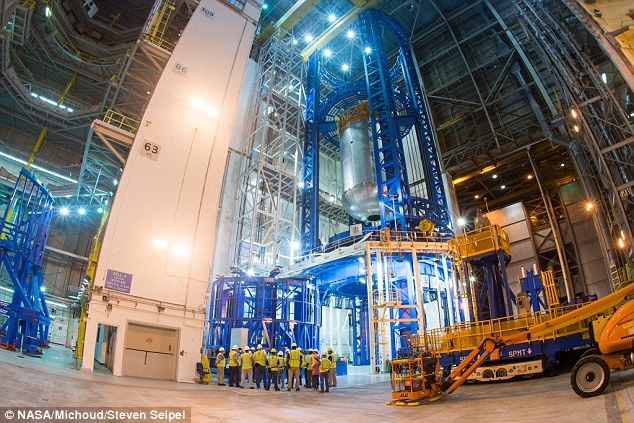
Photos of the massive structure show just how big one of these tanks really is. On the Vertical Assembly Center at Michoud Assembly Facility in New Orleans where the welding was competed, engineers standing nearby are dwarfed in comparison.

At the same facility, parts of the hardware for the liquid hydrogen tank were completed last month, and engineers say the welding for the Block I SLS configuration’s core stage will be done this coming summer.
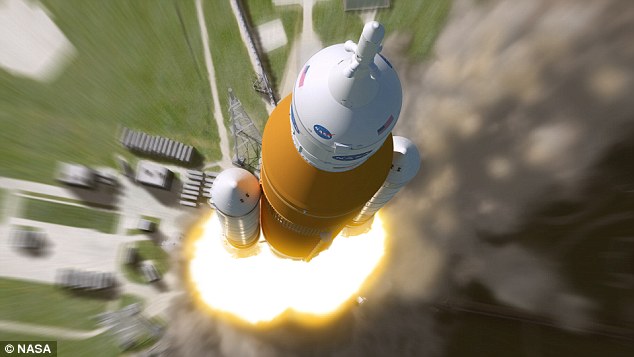
The agency has plans to launch Orion atop the SLS in 2018, and researchers say this is the final step before actually building and testing the ground systems. To support the two craft, Kennedy’s launch infrastructure is now undergoing complete transformation.
The agency has plans to launch Orion atop the SLS in 2018, and researchers say this is the final step before actually building and testing the ground systems.
To support the two craft, Kennedy’s launch infrastructure is now undergoing complete transformation.
‘The team is working hard and we are making remarkable progress transforming our facilities,’ said Mike Bolger, Ground Systems Development and Operations (GSDO) Program manager.
‘As we are preparing for Nasa’s journey to Mars, the outstanding team at the Kennedy Space Center is ensuring that we will be ready to receive SLS and Orion flight hardware and process the vehicle for the first flight in 2018.’
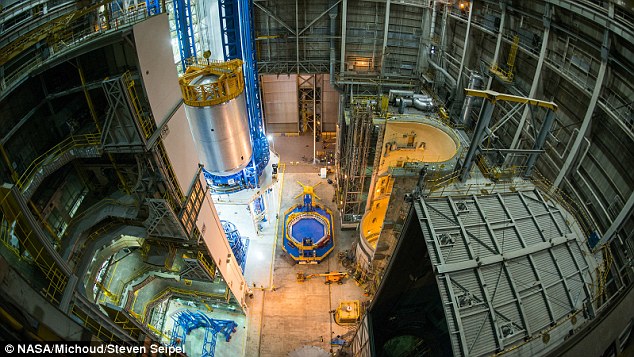
Just days later, the agency also revealed it has completed a successful review of plans for the facilities and ground support systems for the SLS and Orion spacecraft at Nasa’s Kennedy Space Center in Florida. To do this, experts spent months reviewing hundreds of documents.
Day|Week

 Kenyan woman's crappy photoshopped pictures make her a web celebrity
Kenyan woman's crappy photoshopped pictures make her a web celebrity Magnificent view of E. China's Anhui province
Magnificent view of E. China's Anhui province Global landmarks captured in striking shots
Global landmarks captured in striking shots Thailand Elephants Disguised as Pandas Sparks Debates
Thailand Elephants Disguised as Pandas Sparks Debates College girl dresses as mermaid to mark World Water Day
College girl dresses as mermaid to mark World Water Day J-15 fighters in drill on Chinese aircraft carrier
J-15 fighters in drill on Chinese aircraft carrier 96-Year-Old Veteran Becomes Fashion Icon
96-Year-Old Veteran Becomes Fashion Icon Creative mother produces 232 unique breakfasts
Creative mother produces 232 unique breakfasts Charming folk customs in Kalajun Grassland
Charming folk customs in Kalajun Grassland A glimpse of ships and boats commissioned to PLA Navy in past 3 years
A glimpse of ships and boats commissioned to PLA Navy in past 3 years